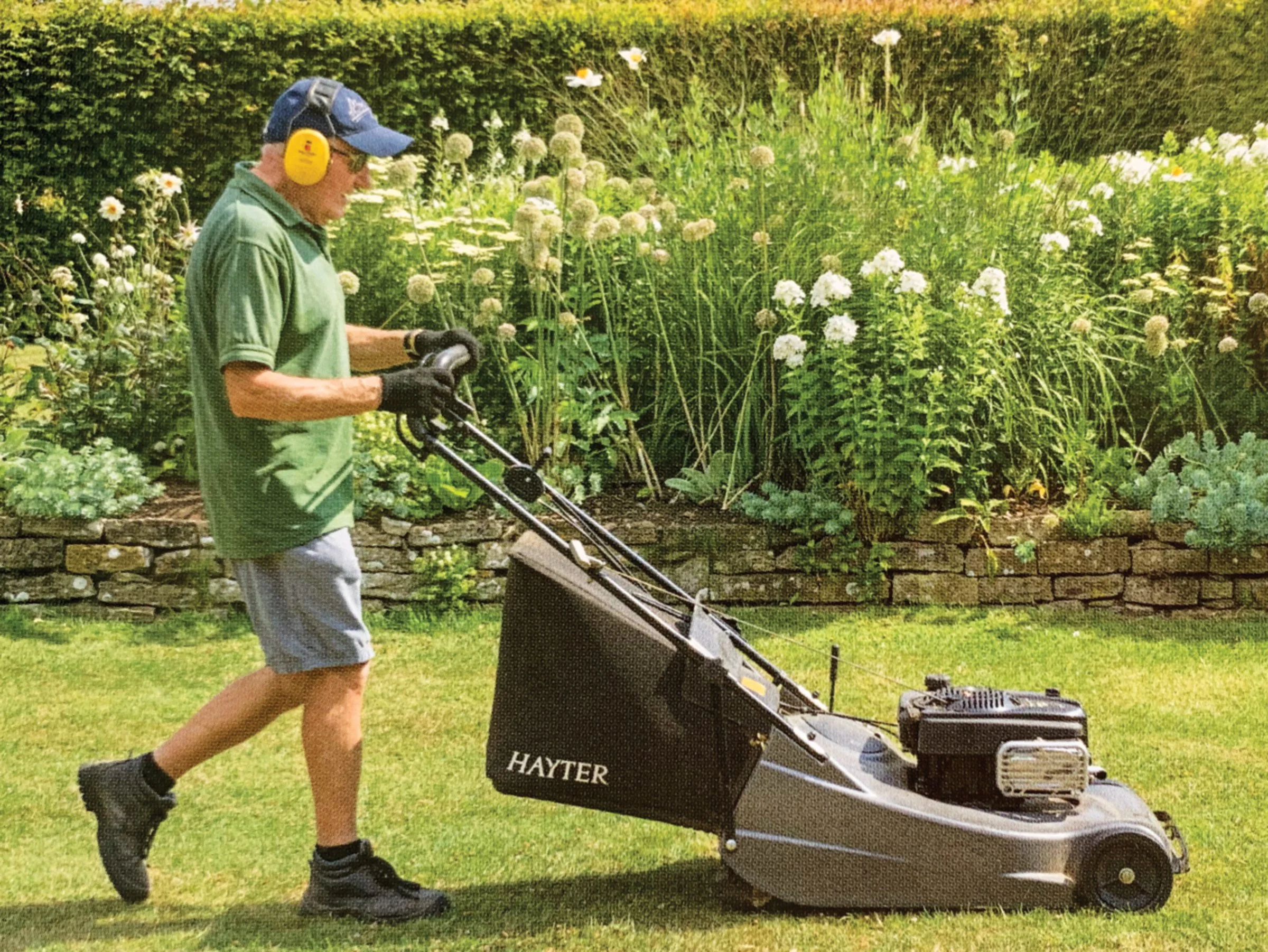GET GROWING!
THE MAN WHO MOWS 1000 KM EACH YEAR
Bob Dawson cutting the grass. He mows over 1000 km each year. Image credit: THE NATIONAL TRUST SCHOOL OF GARDENING by Rebecca Bevan.
By LADYBUG
The cluster bellflowers in my yard burst into exuberant bloom in June, adding a jolt of deep, saturated purple.
I love the flowers, but not how they insert themselves in every blank space, sometimes overpowering a lily that’s struggling to come up for air in a dense clump of bellflowers.
Thankfully, my neighbours also love the plants that generously self-seed and make themselves at home in beds other than in which they were initially planted. I dig them up and share them with anyone who will give them a new home.
Last year, I gave large clumps to two neighbours, but didn’t see any show of purple this past summer. At first I thought they might have planted them in the backyard, but then it occurred to me to double-check.
“They didn’t make it,” confessed one almost sheepishly. Assuring her that it wasn’t her fault, that some plants take a while and sometimes several attempts to settle in, I gave her more plants.
This time, I suggested that she use a garden marker or make a note of the spot, so she knew not dig them next year when an unfamiliar plant made an appearance. This bit of gardening advice came from experience – I have dug up several plants in my spring-cleaning frenzy, only to realize that they were new plants I had added the previous year.
This is the sort of tip gardeners share. But they tend to be specific to a plant or a plant issue.
For a veritable treasure chest of gardening advice and inspiration, we need books like The National Trust School of Gardening.
Packed with sage, practical “lessons” it’s like having the over 500 gardeners with an extraordinary wealth of experience that the National Trust employs on call.
To wit:
• To create a harmonious garden, resist the urge simply to collect all your favourite plants in one space. Instead, try to choose each plant especially for its spot, factoring in the soil, light levels, flowering time and colour, size and habit. I vow to chant this the next time I am seduced by a new shade of iris (or peony) at the nursery.
• For the best borders, factor in a few hours every week for checking them over; pull out weeds as they appear and keep an eye on thuggish perennials so that more delicate plants get their chance to shine...if your border is backed by a hedge, leave a gap for hedge-cutting. I learnt this the hard way, having placed plants right up against a hedge in a previous garden, resulting in grumblings of “Mom has booby-trapped the yard” every time a teenage son was sent out to trim the hedge.
• A sustainable, wildlife-friendly garden doesn’t need to be messy; it simply needs to be gardened more gently to cause the least harm to its inhabitants.
• There are tips on what to do with those pesky weeds. The take-away being that while weed-killers might get rid of broadleaf species, nothing works on everything that blows over into our yards and pulling them out by the root, really, is the way to go.
I was convinced growers develop sterile varieties (plants that will not provide viable seeds) to increase their sales. I learn that this is done to encourage plants to repeat flower because a plant will keep flowering until it has produced seeds. Which is why, I remind myself, we deadhead annuals, and send a mental apology the growers’ way.
There are also images to drool over, including ones from the gardens the National Trust plants and maintains. Such as Virginia and Leonard Woolf’s garden. Horticulturalist Caroline Zoob tidied up the garden that had fallen into disrepair, staying true to Leonard’s vision and taking inspiration from comments in Virginia’s diary.
Our garden is a perfect variegated chintz... all bright, cut from coloured papers.
And there’s one I love, of volunteer Bob Dawson cutting the grass. According to the caption, he mows over 1000 km each year.
My current reading as I look ahead to the next season in my garden, the book begins with a quote from Vita Sackville-West, the doyenne of British gardening: The most noteworthy thing about gardeners is that they’re always optimistic, always enterprising, and never satisfied. They always look forward to doing something better than they have ever done before.
This book can help transform your garden and your gardening skills, whether you are a novice or an experienced enthusiast.
The National Trust School of Gardening by Rebecca Bevan is published by National Trust Books, $55.


